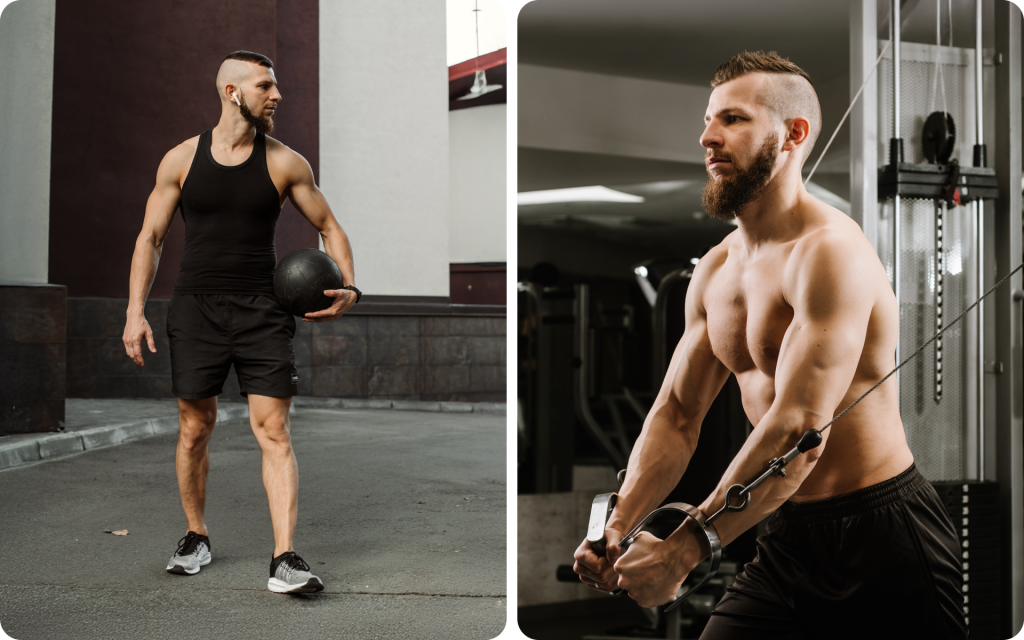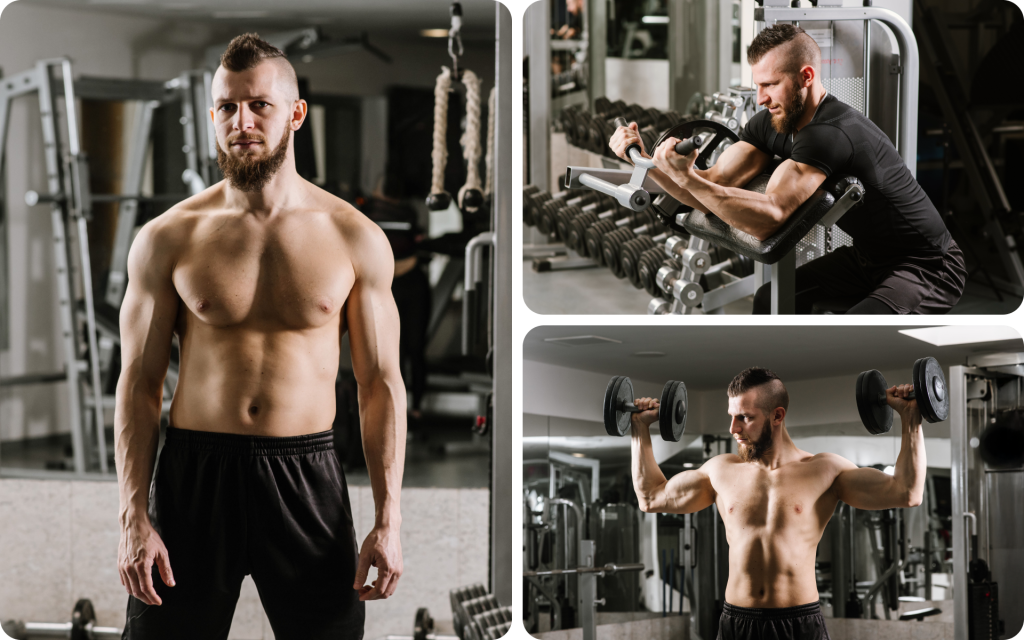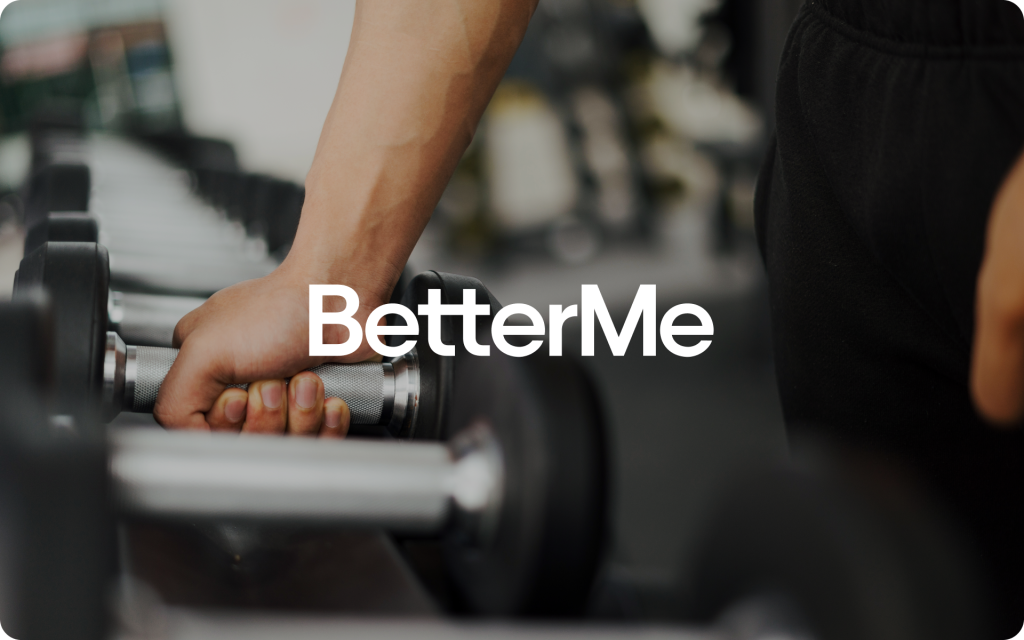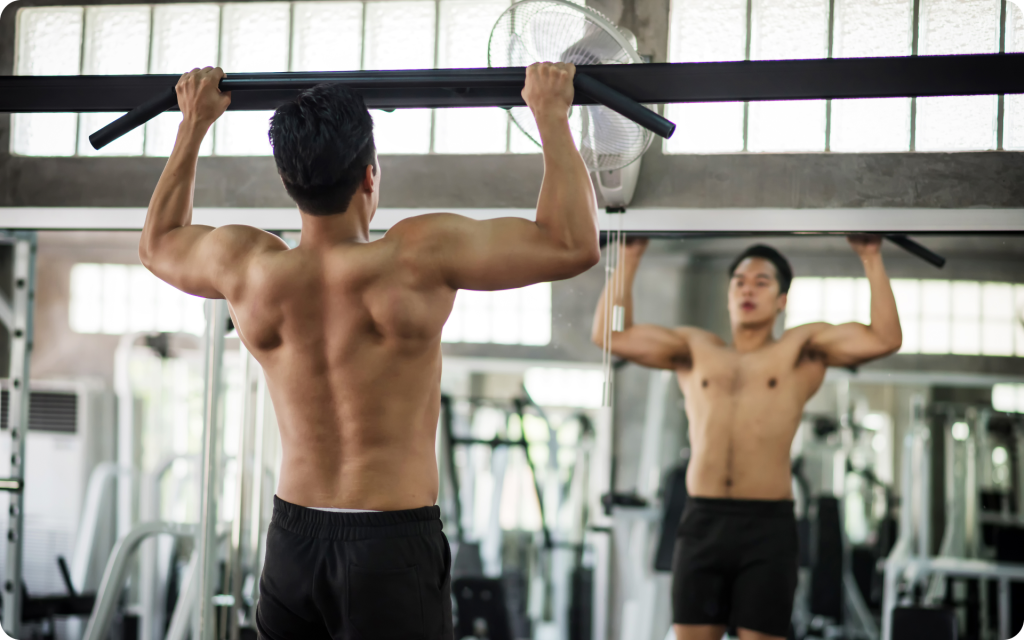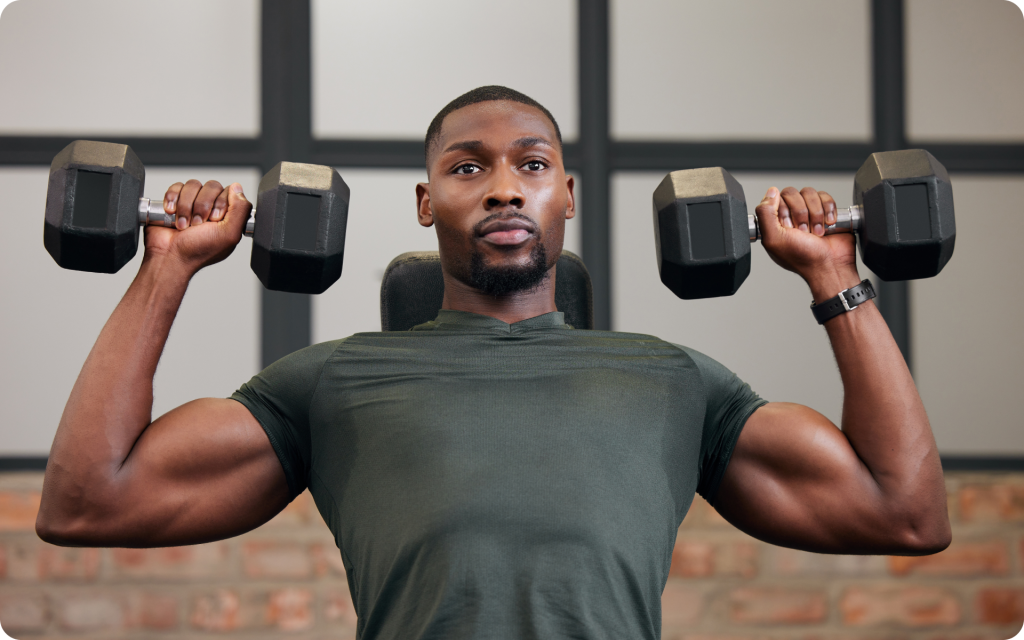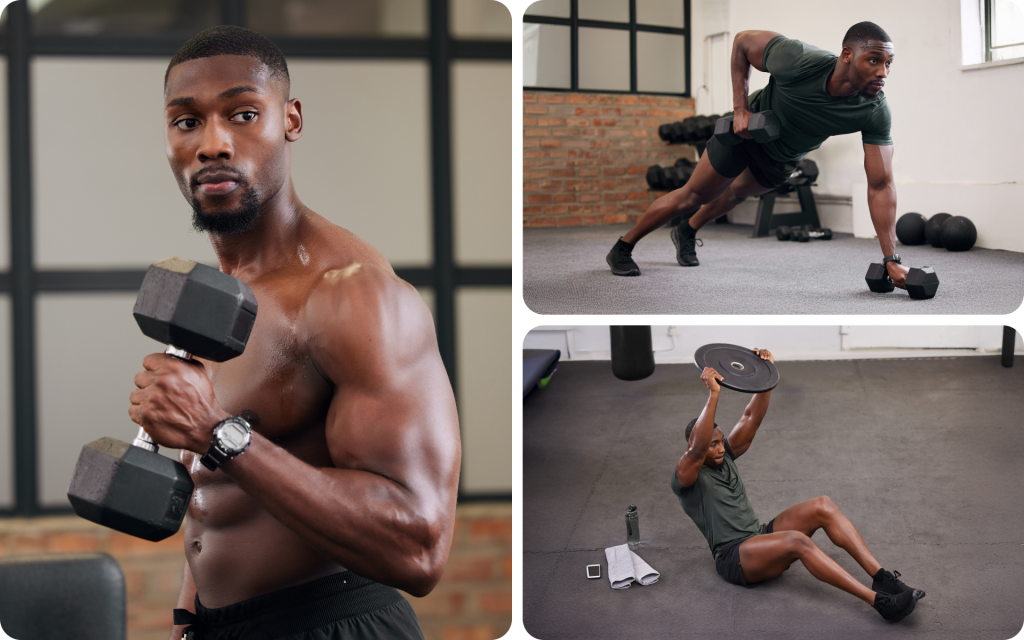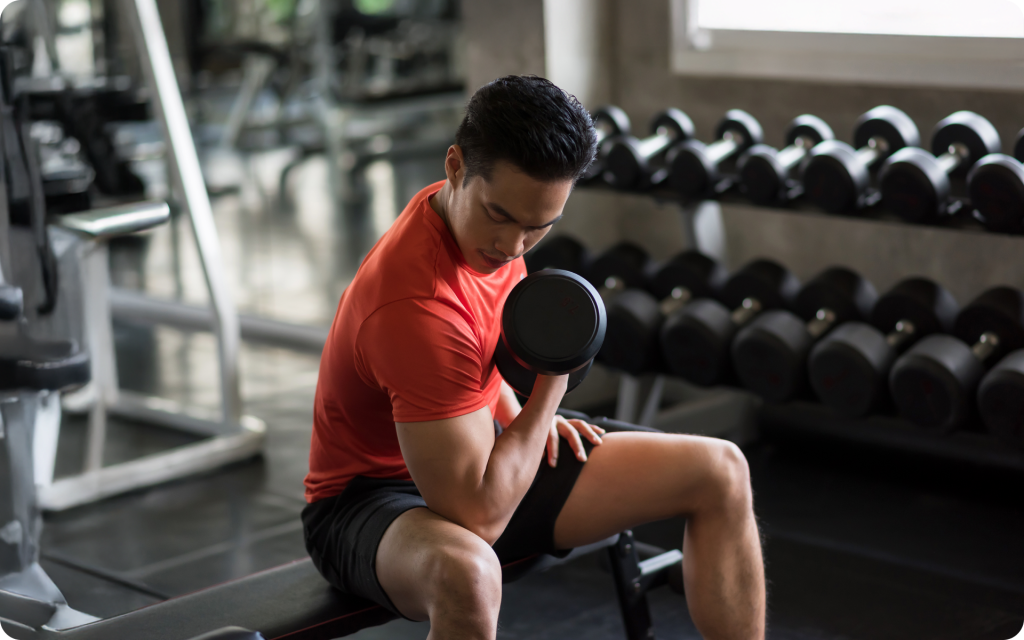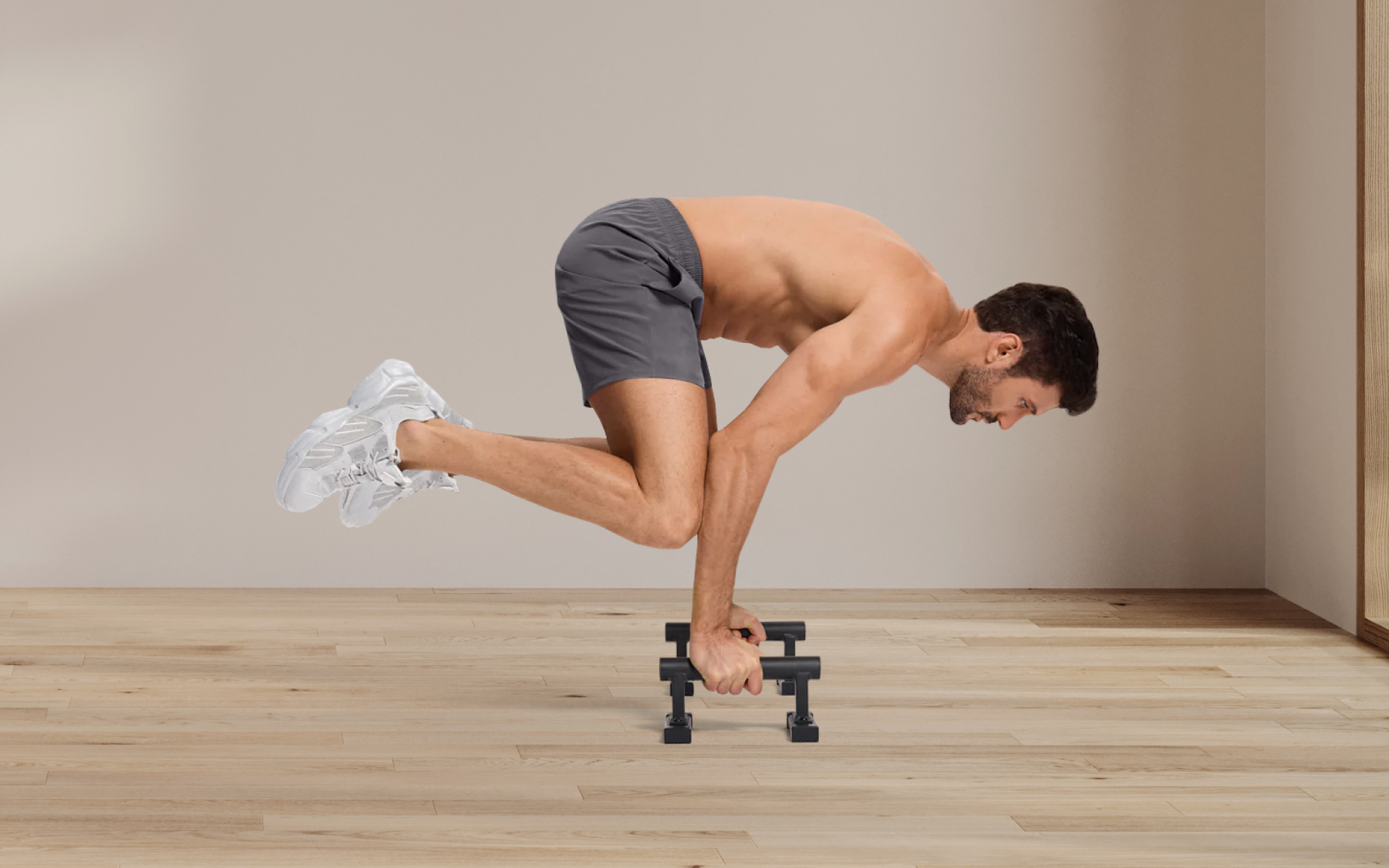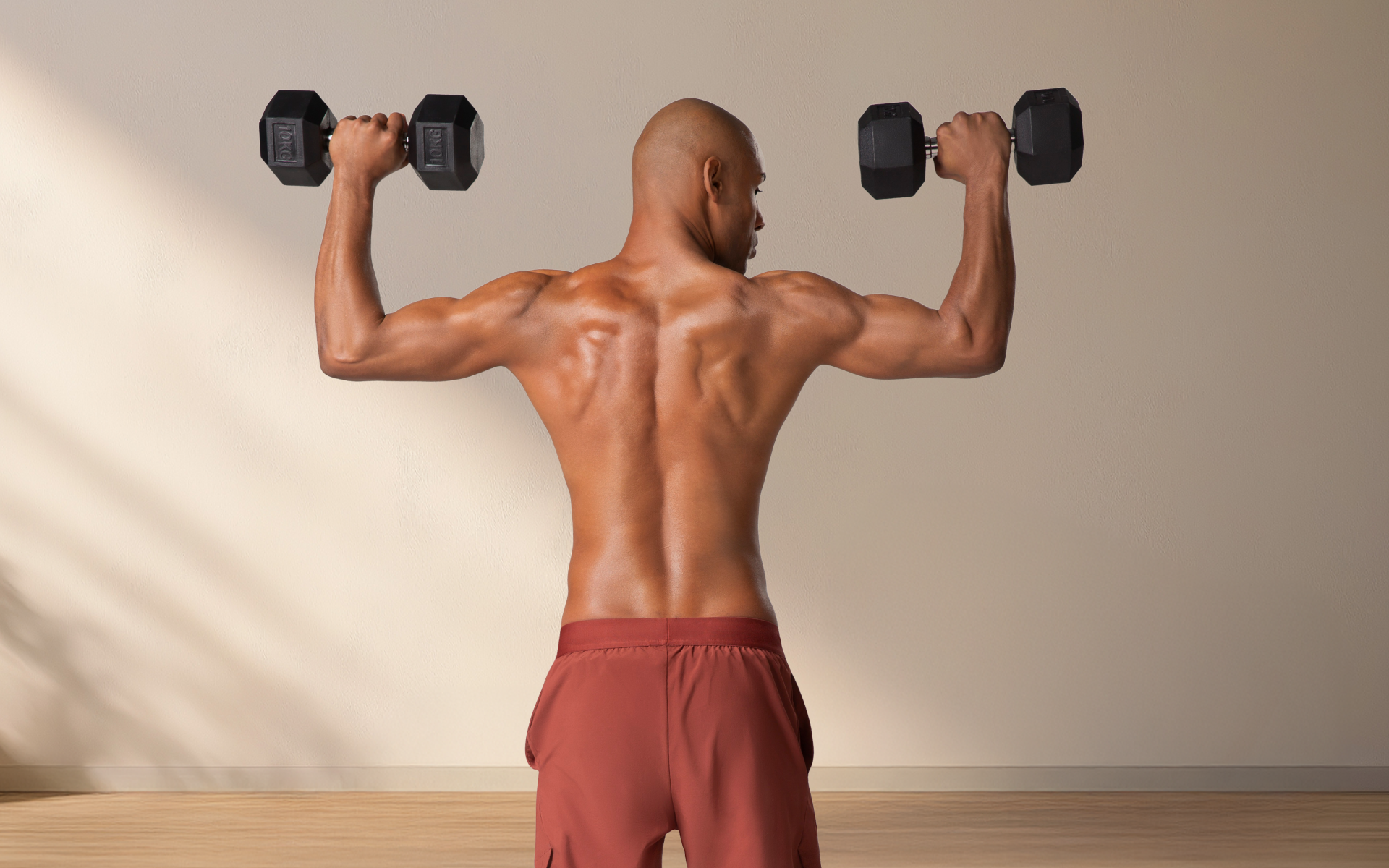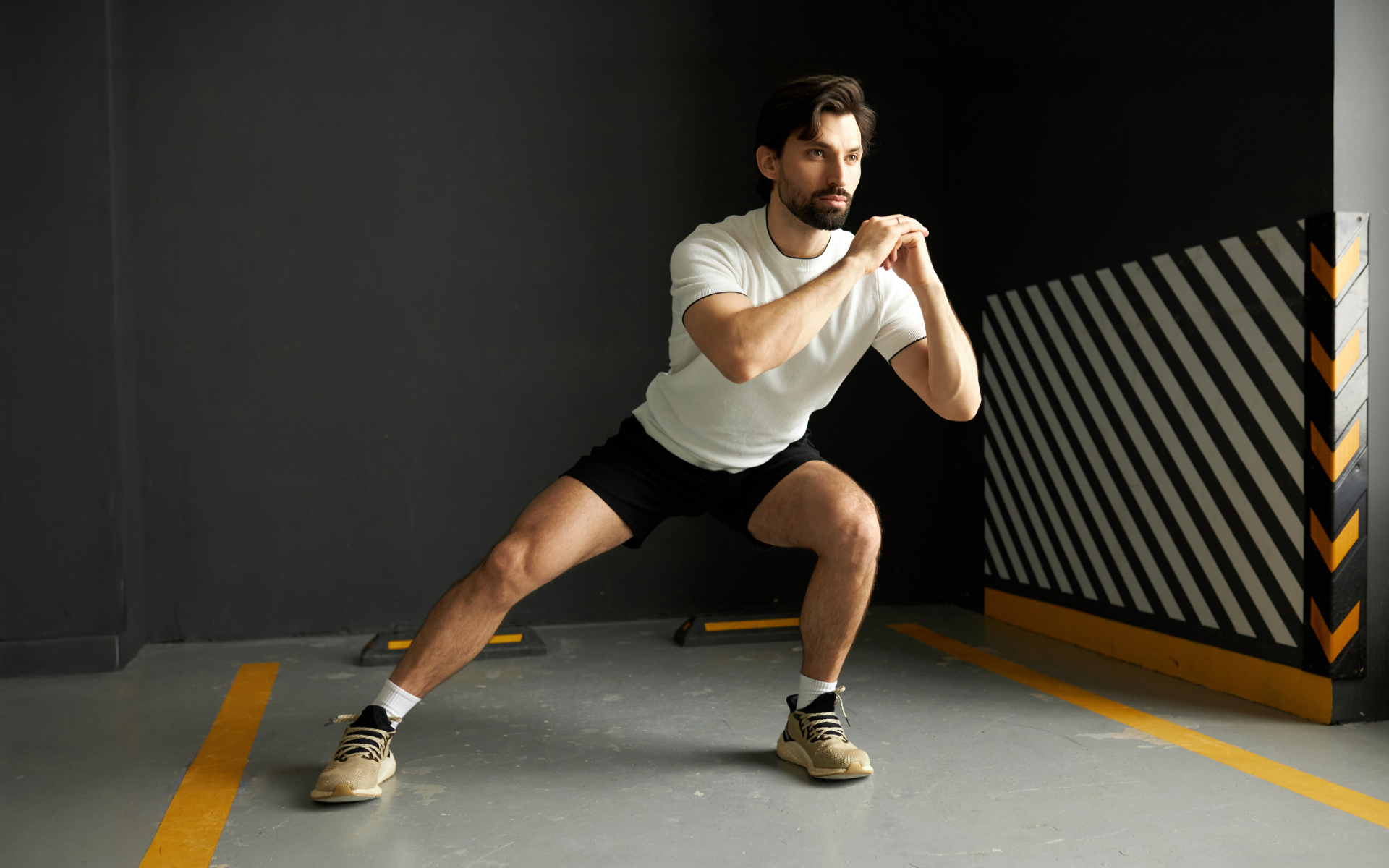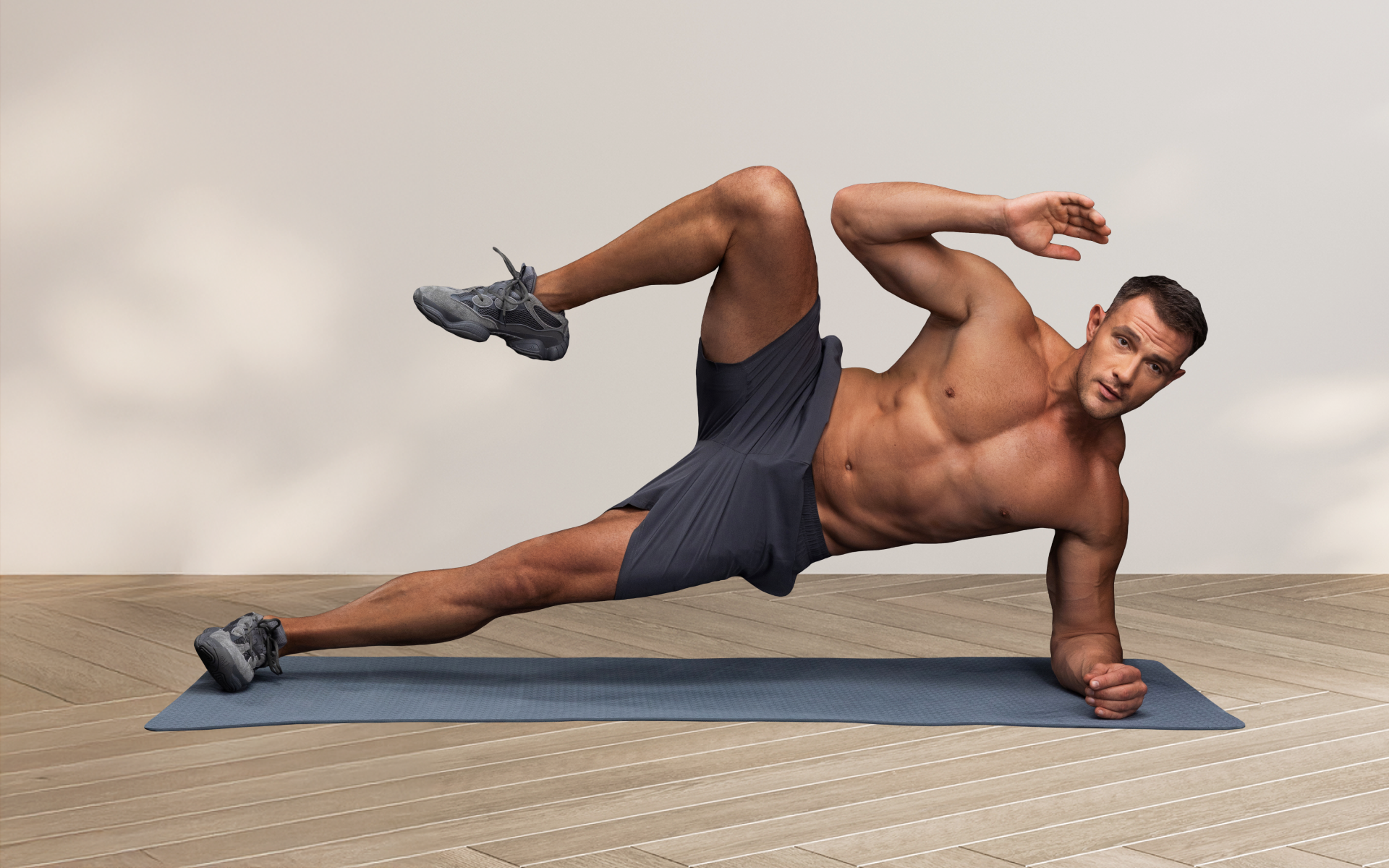Most of us are guilty of spending countless hours in the gym, jumping from machine to machine. However, some of the most effective workouts involve just five fundamental movements that have been building stronger, more resilient bodies for decades.
Compound exercises can transform your physique, your overall movement quality, and injury resilience. These multi-joint movements mirror how your body naturally functions – lifting, pushing, pulling, and squatting through daily activities.
In this comprehensive guide, we’ll explore the science behind compound movements, examine whether they alone can build muscle, and provide you with a practical 3-day workout plan that maximizes your training efficiency.
Should I Only Focus on Compound Exercises?
Many experts agree that effective training programs should be built around compound movements (1). These exercises recruit multiple muscle groups simultaneously, which creates greater neural adaptation and functional strength development.
Compound exercises offer several advantages that align with the SAID principle (specific adaptations to imposed demands). Your body adapts precisely to the demands you place on it, no more and no less (2). When you perform compound movements, you’re training your muscles to work together as integrated systems rather than isolated units.
Research supports the efficiency of compound exercise programs. They stimulate greater hormonal responses, including increased growth hormone and testosterone production, compared to isolation exercises (3, 4). This hormonal environment supports:
- Muscle growth
- Fat loss
- Overall metabolic health
However, focusing exclusively on compound exercises may have limitations. Some experts have suggested that a well-rounded program should address individual muscle imbalances and movement deficiencies. Some athletes may benefit from targeted isolation work to address specific weaknesses or imbalances that compound movements alone cannot correct (5).
A commonly used approach is making compound exercises the foundation of your program – approximately 70-80% of your training volume depending on your needs – while strategically incorporating isolation exercises to address specific goals or imbalances. This approach maximizes training efficiency while ensuring comprehensive muscular development. If you’re curious about compound exercises for weight loss, check out our earlier article.
Read more: Workout Plan for Gym Newbies: Exercises, Tips, and All There Is to Know
Can You Build Muscle with Only Compound Exercises?
You can build muscle with only compound exercises. Compound exercises are multi-joint movements that engage multiple muscle groups at once, which makes them highly effective for building strength and muscle mass.They work so well because they:
- Engage Multiple Muscle Groups: Exercises such as squats, deadlifts, bench presses, pull-ups, and rows target several muscles simultaneously, which allows you to train more efficiently.
- Lift Heavier Weights: As multiple muscles are involved, you can typically lift heavier loads, which is a key factor in muscle growth (progressive overload).
- Stimulate Hormonal Response: Compound movements trigger the release of muscle-building hormones such as testosterone and growth hormone.
- Improve Functional Strength: These exercises mimic real-life movements, which improves overall strength and coordination.
- Time Efficiency: You can work multiple muscles in a single exercise, which reduces the need for a long workout.
To effectively build muscle with compound lifts, you should keep these points in mind:
- Progressive Overload: Gradually increase the weight or resistance to continue building muscle (6).
- Proper Form: Since compound exercises involve multiple joints, maintaining proper form is essential to avoid injury (7).
- Balanced Programming: While compound exercises are great, make sure you’re targeting all major muscle groups evenly to avoid imbalances (5).
While isolation exercises (such as bicep curls or leg extensions) can complement your routine by targeting specific muscles, they’re not essential for muscle growth if you’re consistently performing compound movements.
When it comes to weight loss, progress is made by inches, not miles, so it’s much harder to track and a lot easier to give up. The BetterMe: Health Coaching app is your personal trainer, nutritionist, and support system all in one. Start using our app to stay on track and hold yourself accountable!
What Are the Big 5 Compound Exercises?
The “Big 5” compound exercises represent fundamental human movement patterns that form the cornerstone of functional strength training. These exercises have stood the test of time as they efficiently target multiple muscle groups while building real-world strength and stability.
Barbell Back Squat
The barbell back squat develops your:
- Quadriceps
- Hamstrings
- Glutes
- Core
It will even strengthen the muscles, ligaments, and tendons surrounding your knee joint.
This exercise teaches proper hip hinge mechanics and builds lower-body power that transfers to countless daily activities (8).
Biomechanics: The squat involves simultaneous hip and knee flexion during the descent, followed by coordinated extension during the ascent. Your core muscles work isometrically to maintain spinal stability throughout the movement.
Variations: Front squats shift emphasis to your quadriceps and core, while goblet squats provide an excellent learning progression for beginners. Box squats help develop proper depth and can be useful for those with mobility limitations.
Steps:
- Position the bar across your upper trapezius muscles, using a closed, pronated grip.
- Step back with your feet shoulder-width apart and your toes pointed slightly outward.
- Inhale deeply and engage your core muscles.
- Initiate the movement by pushing your hips back while simultaneously flexing your knees.
- Descend until your thighs are parallel to the floor, keeping your torso upright.
- Drive through your heels to return to the starting position, extending your hips and knees simultaneously.
- Exhale near the top of the movement.
Deadlift
The deadlift is often called the king of compound exercises as it engages more muscle mass than any other single movement. It develops your posterior chain:
- Hamstrings
- Glutes
- Erector spinae
- Latissimus dorsi
At the same time, it builds grip strength and total core stability (9).
Biomechanics: The deadlift is a hip-dominant movement that requires coordinated activation of your posterior chain muscles. Your hamstrings and glutes provide the primary force generation, while your core and back muscles maintain spinal stability.
Variations: Romanian deadlifts emphasize hamstring flexibility and strength, while sumo deadlifts allow for a more upright torso position. Trap bar deadlifts provide a more quad-dominant variation that’s easier on the lower back.
Steps:
- Stand with your feet hip-width apart, your shins touching the bar.
- Hinge at your hips and grasp the bar with your hands just outside your legs.
- Keep your chest up and your shoulders back, creating a neutral spine.
- Engage your lats by pulling your shoulder blades down and back.
- Drive through your heels while simultaneously extending your hips and knees.
- Keep the bar close to your body throughout the entire movement.
- Stand tall with your shoulders back, then reverse the movement to return the bar to the floor.
Bench Press
The bench press develops your:
- Chest
- Shoulders
- Triceps
while also teaching proper upper-body pressing mechanics. This exercise builds functional pushing strength that carries over to daily activities and athletic performance (10).
Biomechanics: The bench press involves horizontal shoulder adduction and elbow extension. Your chest muscles provide the primary force, while your shoulders and triceps help with the movement. Core stability is essential for maintaining proper body position.
Variations: Incline bench press targets the upper chest more directly, while decline bench press emphasizes the lower chest (11). Dumbbell variations allow for greater range of motion and can help address strength imbalances.
Steps:
- Lie on the bench with your eyes directly under the bar.
- Grip the bar slightly wider than shoulder-width with a closed, pronated grip.
- Create a slight arch in your lower back and squeeze your shoulder blades together.
- Plant your feet firmly on the floor.
- Lower the bar to your chest in a controlled manner, touching lightly at nipple level.
- Press the bar back to the starting position, focusing on pushing through your palms.
- Maintain tension in your core and legs throughout the movement.
Pull-Up/Chin-Up
Pull-ups and chin-ups develop your:
- Latissimus dorsi
- Rhomboids
- Middle trapezius
- Biceps
while improving grip strength and core stability (12). These exercises teach proper pulling mechanics and help balance the pressing movements in your routine.
Biomechanics: Pull-ups involve shoulder adduction and elbow flexion against your body weight. Your lats provide the primary pulling force, while your rhomboids and middle traps stabilize your shoulder blades. Core engagement prevents swinging and maintains proper body position.
Variations: Chin-ups (palms facing you) emphasize biceps involvement, while wide-grip pull-ups target the outer lats. Assisted pull-ups using bands or machines help beginners build strength progressively.
Steps:
- Hang from the bar with your arms fully extended and your feet off the ground.
- Use an overhand grip slightly wider than shoulder-width apart.
- Engage your core and squeeze your glutes to maintain body stability.
- Pull your body up by driving your elbows down and back.
- Continue until your chin clears the bar.
- Lower yourself in a controlled manner to the starting position.
- Maintain tension in your lats and avoid swinging or using momentum.
Overhead Press
The overhead press develops your:
- Shoulders
- Triceps
- Upper back
- Core
This exercise teaches proper overhead mechanics and helps prevent shoulder impingement issues (13).
Biomechanics: The overhead press involves shoulder flexion and elbow extension while maintaining core stability. Your deltoids provide the primary force, while your triceps assist in lockout. Your core muscles work to prevent excessive back extension.
Variations: Seated overhead press removes the core stability component, while dumbbell presses allow for greater range of motion. Push press adds a leg drive component for handling heavier loads.
Steps:
- Stand with your feet shoulder-width apart, holding the bar at shoulder height.
- Grip the bar slightly wider than shoulder-width apart with a closed, pronated grip.
- Keep your core tight and maintain a neutral spine.
- Press the bar straight up, moving your head back slightly to allow bar clearance.
- Lock out your arms directly overhead with the bar over your shoulders.
- Lower the bar back to the starting position in a controlled manner.
- Avoid excessive back extension by maintaining core tension throughout.
What Is a Powerful Compound Lift Workout Plan?
Based on the NSCA’s program design principles (14), an effective compound lift program should incorporate:
- Progressive Overload: Gradually increase the weight, reps, or intensity of your compound lifts over time to continually challenge your muscles and stimulate growth.
- Adequate Recovery: Allow sufficient rest between workouts and ensure proper sleep and nutrition to let your muscles repair and grow stronger.
- Systematic Variation: Regularly adjust variables like exercise selection, sets, reps, or intensity to prevent plateaus and keep your body adapting.
The following 3-day full-body compound workout routine integrates the Big 5 movements with a core-focused compound exercise.
This program uses a simple, full-body split that you’ll repeat three times during the week. Each session consists of the same movements – one per movement pattern, allowing you to build strength and efficiency. The 3-day format fits well into most schedules while maximizing training efficiency.
Reasons why BetterMe is a safe bet: a wide range of calorie-blasting workouts, finger-licking recipes, 24/7 support, challenges that’ll keep you on your best game, and that just scratches the surface! Start using our app and watch the magic happen.
Compound Lifts Full-Body Workout
Warm-up: 5-10 minutes of general movement (light cardio) followed by dynamic stretching and movement preparation
Main Workout:
- Barbell back squat
- Bench press
- Bent-over row
- Romanian deadlift
- Overhead press
- Plank
Rest: 2-3 minutes between sets for compound movements, 1-2 minutes for planks
Program Progression
Follow the principle of progressive overload by gradually increasing the demands on your muscles.
- Weeks 1-2: Focus on learning proper form with moderate weights. You can start with either heavy lifts (3-6 reps with 75-90% of your one-rep max) or moderate loads (6-12 reps with 65-75% of your one-rep max).
- Weeks 3-4: Increase weight by 2.5-5% when you can complete all sets with good form.
- Weeks 5+: Continue this progression until your progress begins to slow. You can also increase reps within the given rep range.
Read more: 3-Month Bulk Workout Plan: Your Science-Based Guide to Strength and Size
Should You Go Heavy on Compound Lifts?
Whether or not to go heavy on compound lifts will depend on your goals, experience level, and training plan. It usually means lifting a weight that is challenging for a low number of repetitions, usually in the range of 1-6 reps per set at 75-90% of your one-rep max (1RM).
Lifting heavier loads during compound exercises, such as the squat or deadlift, maximizes mechanical tension, a key driver of strength and hypertrophy (15). Heavier weights require greater neuromuscular activation, which stimulates muscle adaptations and improves intermuscular coordination.
According to the Journal of Strength and Conditioning Research, this approach is particularly beneficial for intermediate to advanced lifters who’ve already established sound technique and body awareness (16).
Before going heavy on compound lifts, you should bear in mind:
- Technique Comes First
The effectiveness of heavy lifting is reliant on proper form. Mistakes, particularly under heavy loads, amplify the risk of injury. Prioritize technical mastery before you increase the weight.
- Gradual Progression
Progressive overload is key. Gradually increase weights over time to allow your muscles, tendons, and ligaments to adapt safely. For example, if you squat 100 lbs for 8-10 reps, try 105 lbs next week. Or you could focus on better technique, such as deeper squats or stricter pull-ups, to increase the challenge without adding weight.
- Recommendation
For well-rounded development, include a mix of heavy lifts (3-6 reps with 75-90% of your one-rep max) and moderate loads (6-12 reps with 65-75% of your one-rep max).
How Many Times a Week Should You Do Compound Lifts?
The NSCA suggests the following general recommendations based on training level (17):
- Beginners (0-6 months of training): 2-3 sessions per week.
- Intermediate Lifters (6-12 months of training): 3-4 sessions per week.
- Advanced Lifters (1 year+ of training): 4+ sessions per week, with careful attention paid to recovery.
To decide how often you should do compound lifts, consider:
Training Split
A full-body workout may incorporate compound lifts 2-3 times weekly. On the other hand, a split routine (e.g. push/pull or upper/lower body) allows you to increase the frequency, targeting specific movement patterns in each session.
For example:
- 3 Sessions Weekly – Combine lower-body and upper-body compounds in each session (e.g. squats, deadlifts, presses, rows).
- 4+ Sessions Weekly – Alternate movement patterns to avoid excessive fatigue, such as lower body one day and upper body the next.
Recovery and Rest
Compound lifts tax the nervous system and muscular system significantly.
Ensure it is aligned with your recovery plan to prevent overreaching or plateauing. Allow at least 48 hours between sessions that target the same movement patterns.
Volume and Intensity
High-intensity sessions may require longer recovery periods. On the other hand, moderate-intensity sessions with moderate volume allow for more frequent training.
What Will Happen if I Only Do Compound Lifts?
Focusing exclusively on compound lifts can result in significant functional and performance gains. These exercises work multiple muscle groups, enhancing strength, coordination, and cardio efficiency (1).
Most new lifters can train compound-only for at least a year, unless there are any obvious imbalances or lagging muscles. In fact, many people could never use isolations with no issues, depending on their goals and exercise selection.
To achieve complete muscular development, you may want to complement compounds with targeted isolation exercises. For example:
- Add shoulder lateral raises to address the deltoids.
- Incorporate hamstring curls for complete lower-body development.
- Consider lower-weight core exercises such as planks or ab rollouts.
Compound lifts should remain the foundation, but isolation and mobility exercises enhance overall balance and longevity in training.
Compound lifts such as squats, deadlifts, and overhead presses require significant core engagement, which helps strengthen and develop the abdominal muscles. However, for visible abs, dedicated core exercises and low body fat levels are equally important. The deadlift is widely considered to be the most challenging compound exercise due to the high demand it places on strength, technique, and total-body coordination. It activates multiple large muscle groups and requires excellent form to avoid injury. Performing compound exercises daily isn’t generally recommended, as these movements place substantial stress on the muscles and nervous system. Most science-based guidelines suggest incorporating rest days or alternating muscle groups to allow for recovery and adaptation (18). Potential disadvantages include a higher learning curve for proper form, increased injury risk if performed incorrectly, and less isolation for smaller or specific muscle groups. It’s a good idea to include mobility or isolation if you have any specific areas that require help.Frequently Asked Questions
Do compound lifts build abs?
What is the hardest compound exercise?
Can I do compound exercises daily?
What are the disadvantages of compound exercise?
The Bottom Line
Compound exercises represent the most efficient path to building functional strength, muscle mass, and movement quality. The Big 5 movements – squat, deadlift, bench press, pull-up, and overhead press – form the foundation of countless successful training programs as they mirror how your body naturally moves and works.
The 3-day compound workout routine provides a practical starting point for implementing these principles. Remember that consistency trumps perfection. Focus on mastering the movement patterns before you add significant weight, and prioritize proper form over ego-driven loads.
DISCLAIMER:
This article is intended for general informational purposes only and does not serve to address individual circumstances. It is not a substitute for professional advice or help and should not be relied on for making any kind of decision-making. Any action taken as a direct or indirect result of the information in this article is entirely at your own risk and is your sole responsibility.
BetterMe, its content staff, and its medical advisors accept no responsibility for inaccuracies, errors, misstatements, inconsistencies, or omissions and specifically disclaim any liability, loss or risk, personal, professional or otherwise, which may be incurred as a consequence, directly or indirectly, of the use and/or application of any content.
You should always seek the advice of your physician or other qualified health provider with any questions you may have regarding a medical condition or your specific situation. Never disregard professional medical advice or delay seeking it because of BetterMe content. If you suspect or think you may have a medical emergency, call your doctor.
SOURCES:
- 5 Benefits of Compound Exercises (2016, acefitness.org)
- SAID principle (2020, taylorandfrancis.com)
- Hormonal Responses and Adaptations to Resistance Exercise and Training (2012, link.springer.com)
- Links Between Testosterone, Oestrogen, and the Growth Hormone/Insulin-Like Growth Factor Axis and Resistance Exercise Muscle Adaptations (2021, frontiersin.org)
- Changes in Muscle Activity Imbalance of the Lower Limbs Following 3 Weeks of Supplementary Body-Weight Unilateral Training (2021, mdpi.com)
- Effects of Resistance Training Overload Progression Protocols on Strength and Muscle Mass (2024, pubmed.ncbi.nlm.nih.gov)
- ~Benefits of Proper Form and Technique during~Resistance Training~ (n.d., walkitscience.org)
- Effects of progressive body-weight versus barbell back squat training on strength, hypertrophy and body fat among sedentary young women (2023, pmc.ncbi.nlm.nih.gov)
- A Comparison Between the Squat and the Deadlift for Lower Body Strength and Power Training (2020, pmc.ncbi.nlm.nih.gov)
- The Bench Press Exercise (2018, journals.lww.com)
- Effect of Five Bench Inclinations on the Electromyographic Activity of the Pectoralis Major, Anterior Deltoid, and Triceps Brachii during the Bench Press Exercise (2020, mdpi.com)
- A Comparison of Body Composition, Upper-Body, and Hand Grip Strength among Royal Thai Army Cadets with Different Pull-Up Performance (2024, asep.org)
- The Effect of the Weight and Type of Equipment on Shoulder and Back Muscle Activity in Surface Electromyography during the Overhead Press—Preliminary Report (2022, mdpi.com)
- The National Strength and Conditioning Association’s (NSCA) BASICS OF STRENGTH AND CONDITIONING MANUAL (2012, nsca.com)
- Maximizing Muscle Hypertrophy: A Systematic Review of Advanced Resistance Training Techniques and Methods (2019, mdpi.com)
- Muscle Strength, Power, and Morphologic Adaptations After 6 Weeks of Compound vs. Complex Training in Healthy Men (2015, journals.lww.com)
- Determination of Resistance Training Frequency (2017, nsca.com)
- The Importance of Recovery in Resistance Training Microcycle Construction (2024, pmc.ncbi.nlm.nih.gov)

